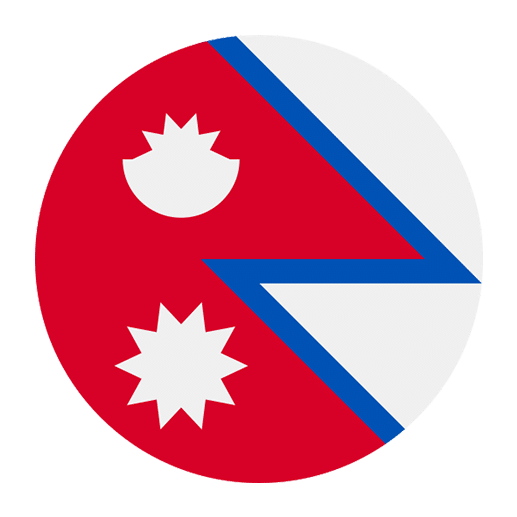The Nepali language, known natively as नेपाली, is the official language of Nepal and is spoken by millions of people in the region. One of the fundamental aspects of learning any language is mastering the use of adjectives, which are essential for descriptive communication. Unlike in English, where adjectives typically precede the nouns they modify, Nepali has its own unique set of rules and conventions for adjective positioning. This article aims to provide a comprehensive guide on how adjectives are positioned in Nepali sentences, making it easier for English speakers to grasp these concepts.
Understanding Nepali Sentence Structure
Before diving into the specifics of adjective placement, it’s important to understand the general structure of Nepali sentences. Nepali follows the Subject-Object-Verb (SOV) order, which is different from the Subject-Verb-Object (SVO) order commonly used in English. For example:
– English: I eat rice.
– Nepali: म भात खान्छु। (ma bhāt khānchu)
In this example, “I” is the subject, “rice” is the object, and “eat” is the verb. In Nepali, the verb “eat” (खान्छु) comes at the end of the sentence.
Basic Adjective Positioning
In Nepali, adjectives generally precede the nouns they modify, similar to English. However, there are some nuances and exceptions that learners need to be aware of. Let’s look at a simple example:
– English: A beautiful house
– Nepali: सुन्दर घर (sundar ghar)
Here, “सुन्दर” (sundar) means “beautiful,” and “घर” (ghar) means “house.” The adjective “सुन्दर” (sundar) comes before the noun “घर” (ghar).
Adjective Agreement
Adjectives in Nepali must agree with the nouns they modify in terms of number and sometimes gender. While Nepali is not as heavily gendered as some other languages, it does have specific rules for pluralization and honorifics, which can affect adjective forms.
– Singular: सुन्दर घर (sundar ghar) – beautiful house
– Plural: सुन्दर घरहरू (sundar gharharu) – beautiful houses
In the plural form, “घरहरू” (gharharu) adds a suffix to indicate plurality, but the adjective “सुन्दर” (sundar) remains unchanged.
Descriptive Adjectives
Descriptive adjectives are the most common type of adjectives, used to describe the quality, size, color, and other attributes of a noun. In Nepali, these adjectives generally follow the same positioning rule but can be emphasized by using additional particles or structures.
Quality:
– English: A good book
– Nepali: राम्रो किताब (ramro kitāb)
Size:
– English: A big tree
– Nepali: ठूलो रुख (ṭhūlo rukha)
Color:
– English: A red flower
– Nepali: रातो फूल (rāto phūl)
In each case, the adjective precedes the noun, following the basic rule of adjective positioning in Nepali.
Quantitative Adjectives
Quantitative adjectives indicate the quantity or amount of the noun they modify. These adjectives can either be specific numbers or general terms indicating quantity.
Specific Numbers:
– English: Three apples
– Nepali: तीनवटा स्याउ (tīnvaṭā syāu)
General Quantity:
– English: Many people
– Nepali: धेरै मानिसहरू (dherai mānisharu)
In these examples, the adjectives “तीनवटा” (tīnvaṭā) meaning “three” and “धेरै” (dherai) meaning “many” precede the nouns they modify.
Interrogative Adjectives
Interrogative adjectives are used to ask questions about nouns and are placed before the nouns they modify.
– English: Which book?
– Nepali: कुन किताब? (kun kitāb?)
– English: How many students?
– Nepali: कति विद्यार्थीहरू? (kati vidyārthīharu?)
In these examples, “कुन” (kun) meaning “which” and “कति” (kati) meaning “how many” are the interrogative adjectives that come before the nouns.
Possessive Adjectives
Possessive adjectives in Nepali, like in English, indicate ownership and are placed before the nouns they modify. However, they often require a possessive particle to link the owner and the owned.
– English: My car
– Nepali: मेरो गाडी (mero gāḍi)
– English: His house
– Nepali: उसको घर (usko ghar)
In these examples, “मेरो” (mero) meaning “my” and “उसको” (usko) meaning “his” are the possessive adjectives that precede the nouns.
Demonstrative Adjectives
Demonstrative adjectives point to specific nouns and are placed before the nouns they modify.
– English: This book
– Nepali: यो किताब (yo kitāb)
– English: That house
– Nepali: त्यो घर (tyo ghar)
In these examples, “यो” (yo) meaning “this” and “त्यो” (tyo) meaning “that” are the demonstrative adjectives that precede the nouns.
Compound Adjectives
Compound adjectives in Nepali are formed by combining two or more adjectives to describe a noun. These compounds are generally placed before the noun, and each part of the compound maintains its individual meaning.
– English: A tall and handsome man
– Nepali: अग्लो र ह्यान्डसम मान्छे (aglo ra hyandsam mānchhe)
In this example, “अग्लो” (aglo) meaning “tall” and “ह्यान्डसम” (hyandsam) meaning “handsome” are combined with the conjunction “र” (ra) meaning “and” to form a compound adjective.
Adjective Placement in Complex Sentences
In more complex sentences, adjectives can sometimes be separated from the nouns they modify by additional clauses or phrases. However, the basic rule of preceding the noun still generally applies.
Relative Clauses:
– English: The book that is on the table is interesting.
– Nepali: मेचमा भएको किताब चाखलाग्दो छ। (mechmā bhayeko kitāb chākhlāgdo cha)
In this example, “भएको” (bhayeko) meaning “that is” is a relative clause that separates the noun “किताब” (kitāb) from the adjective “चाखलाग्दो” (chākhlāgdo) meaning “interesting.”
Prepositional Phrases:
– English: The beautiful house by the river
– Nepali: नदीको छेउमा रहेको सुन्दर घर (nadīko cheumāmā raheko sundar ghar)
Here, “नदीको छेउमा रहेको” (nadīko cheumāmā raheko) meaning “by the river” is a prepositional phrase that comes before the adjective “सुन्दर” (sundar) and the noun “घर” (ghar).
Emphatic Adjectives
In Nepali, emphasis can be added to adjectives by using particles or repeating the adjective for effect. These structures can sometimes alter the typical positioning of the adjective.
Using Particles:
– English: A very beautiful house
– Nepali: धेरै सुन्दर घर (dherai sundar ghar)
In this example, “धेरै” (dherai) meaning “very” is a particle that emphasizes the adjective “सुन्दर” (sundar).
Repetition for Emphasis:
– English: A beautiful, beautiful house
– Nepali: सुन्दर सुन्दर घर (sundar sundar ghar)
Repeating the adjective “सुन्दर” (sundar) adds emphasis to the description.
Adjectives in Idiomatic Expressions
Like any language, Nepali has idiomatic expressions where adjectives may not follow the usual rules of positioning. Learning these expressions can enrich your understanding and usage of the language.
Examples:
– English: A heart of gold
– Nepali: सुनको मुटु (sunko muṭu)
In this idiomatic expression, “सुनको” (sunko) meaning “of gold” is an adjective phrase that follows the noun “मुटु” (muṭu) meaning “heart.”
Conclusion
Mastering the positioning of adjectives in Nepali sentences is crucial for effective communication. While the basic rule is that adjectives generally precede the nouns they modify, there are numerous nuances and exceptions that learners need to be aware of. By understanding the different types of adjectives and how they interact with nouns in various contexts, you can greatly improve your proficiency in Nepali. Whether you’re describing the quality, quantity, or possession of an object, following these guidelines will help you construct accurate and meaningful sentences in Nepali.

